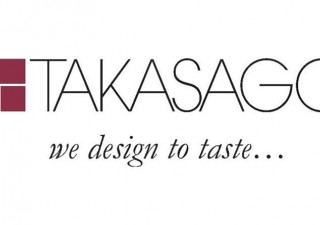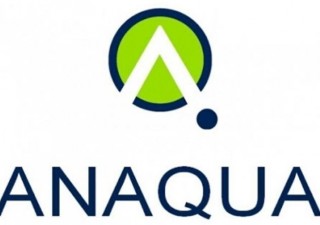Three IP Trends to Watch in Asia in 2018
01 March 2018

Asia is home to many of the world’s most innovative companies… as well as some of the most ingenious imitators. It’s a region where highly developed, sophisticated intellectual property systems and regulatory frameworks in some markets co-exist with relatively immature IP regimes in neighbouring countries.
However, there is one ongoing development that’s consistent across the region: the greater recognition by Asian companies of the need for better, more effective IP management to help them align their IP rights with their business strategies for commercial success. No longer is it simply a case of ‘prosecute and protect’ when it comes to IP rights. Asian companies are taking a more holistic view of their IP portfolios and finding that many of their IP rights can work harder and more profitably for them.
As IP activity increases in Asia, more and more companies across the region are seeking to globalize their IP assets and significantly improve the management of the innovation lifecycle through the deployment of advanced technology platforms. There are three key trends driving this change.
#1 ASIAN COMPANIES ARE LOOKING TO MONETIZE THEIR PORTFOLIOS
Home-grown IP has increased dramatically in the region and many Asian companies are now focused on establishing, protecting and monetizing IP rights in order to increase their return on investment. For example, before 1985, China had no patent law at all. But that has all changed. To encourage innovation, local Chinese authorities went so far as to provide cash subsidies of up to US$4,500 to patent recipients. This undoubtedly helped China become the top patent filer in the world in 2011. It then surpassed all other countries as the top patent issuer in 2015, with over 350,000 patents issued that year alone.
As Asian corporations’ approach to IP management has evolved in the past few years, many companies are embracing global best practices. Previously, they have tended to take a more operational approach to IP management, in particular patent management, but companies are now looking for solutions that offer not only workflow management and process streamlining, but also insights into how best to monetize their portfolios. IP management teams have the opportunity to move from being seen as operational ‘cost-centers’ to revenue generators through the effective valuation and monetization of IP assets - and this trend will continue.
Licensing and litigation are increasing across the region because companies are aware that having a high-quality IP portfolio is the key to staying competitive worldwide.
As a result, we can expect to see more Asian companies taking a genuinely strategic approach to IP portfolio management and becoming truly global in how they evaluate, protect and exploit their assets.
#2 ASIA IS DEPLOYING LEGAL TECHNOLOGIES IN THE CORPORATE SPACE
With many Asian countries continuing to develop their home-grown innovations and more advanced technologies, the protection of IP has become a more critical issue region-wide. As regional patent filing increases, leading innovation markets such as Japan, China, South Korea, Singapore and Taiwan have become more attuned to deploying legal technology in the corporate space.
Many large companies in these markets are using the latest technology to help manage the evaluation and protection of their IP assets. They recognize that IP protection strategies need a strategic focus and must form the centerpiece of their global approach.
Demand for ROI on technology investments is just as important for Asian companies as it is in the US and Europe. There is still some hesitancy around SaaS solutions, but this is beginning to change as Asian companies appreciate the efficiency and value for money of hosted solutions – and look to reduce the management overhead and cost burden of custom-built on-premise solutions.
Indeed, many larger Asian companies are already beginning to embrace holistic, multi-lingual solutions as the only effective way to manage their global teams and portfolios. For example, leading Chinese companies, like Alibaba, Xiaomi, Huawei, and HTC have sophisticated IP business departments focused on protecting their own advanced R&D across the world. This trend will continue, as more giant Asian corporations look to fully monetize their IP portfolios.
#3 GLOBALIZATION IS A KEY DRIVER OF LEGAL TECH
Globalization is a key driver of the growing demand for legal technology in the Asia region. High levels of outbound merger and acquisition activity from leading Asian economies mean many companies are now managing IP portfolios across multiple jurisdictions. Even within Asia itself, R&D centers and manufacturing teams are often located in several different countries.
Managing the activities of these teams and evaluating the commercial potential of their research means all teams, in particular innovation and legal teams need smart, multi-lingual systems where everyone has access to the same information in real time.
Overall patent filing is becoming more international by nature. The 2017 Global Patent & IP Trends Indicator, released by international patent filing service RWS inovia, revealed that more than 41 percent of respondents filed more than half of their patent applications during 2016 in foreign jurisdictions, up from 34 percent foreign filings in 2015.
Globalization brings both commercial opportunity and increased competition. For many companies now, intangible assets such as intellectual property represent around 70-80 percent of their market value. This value needs to be defended, of course, and it also presents a major revenue opportunity.
Asian companies are realizing that embracing holistic legal technology solutions, which combine analytics and workflow tools, enables them to more accurately assess the value of their IP portfolios and identify opportunities to sell, license or partner across the globe. This commercialization of their IP is a key value driver going forward and many companies in Asia are keen to learn from best practices established in other markets such as Europe and North America.






